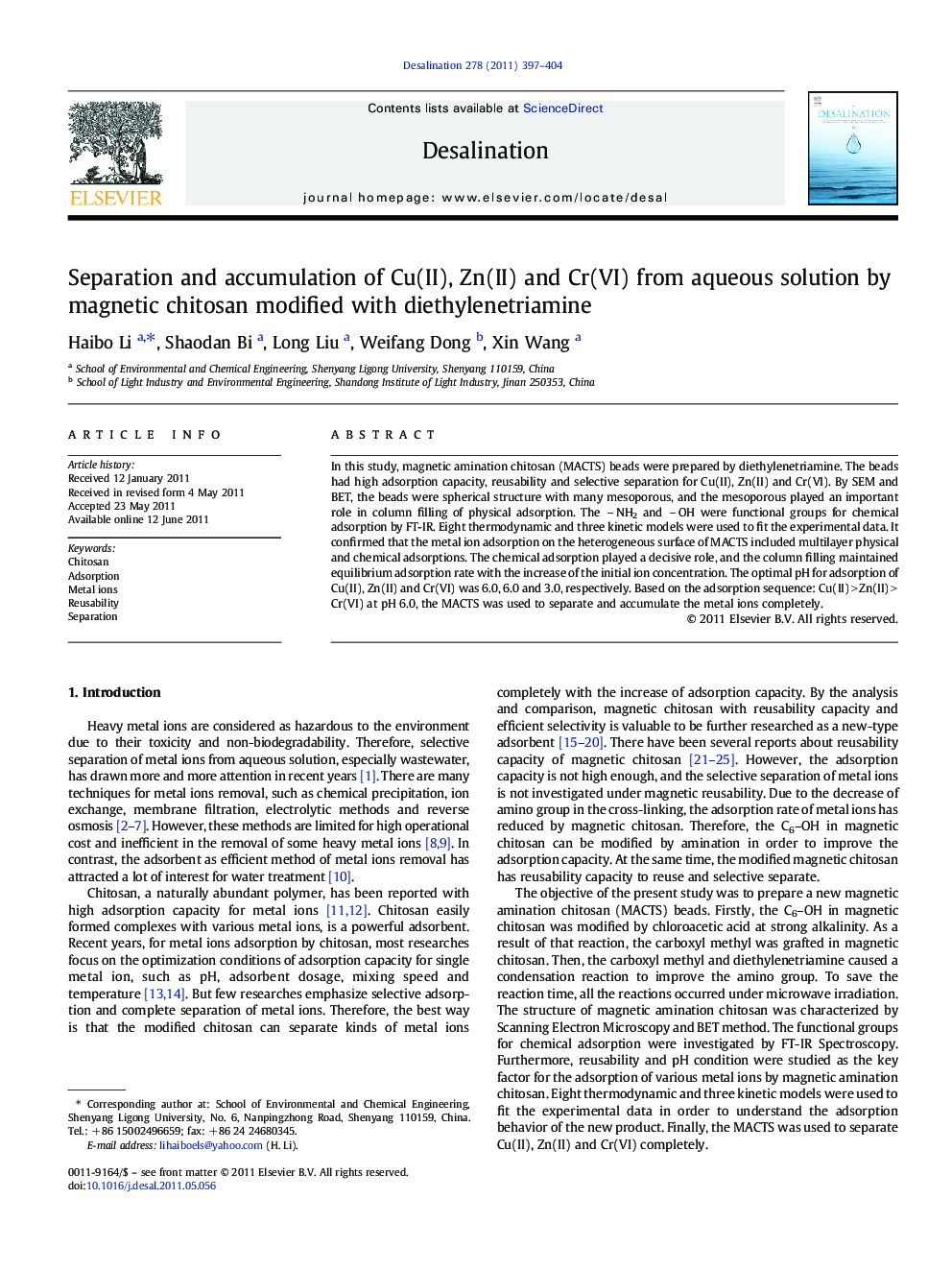| Article ID | Journal | Published Year | Pages | File Type |
|---|---|---|---|---|
| 624990 | Desalination | 2011 | 8 Pages |
In this study, magnetic amination chitosan (MACTS) beads were prepared by diethylenetriamine. The beads had high adsorption capacity, reusability and selective separation for Cu(II), Zn(II) and Cr(VI). By SEM and BET, the beads were spherical structure with many mesoporous, and the mesoporous played an important role in column filling of physical adsorption. The NH2 and OH were functional groups for chemical adsorption by FT-IR. Eight thermodynamic and three kinetic models were used to fit the experimental data. It confirmed that the metal ion adsorption on the heterogeneous surface of MACTS included multilayer physical and chemical adsorptions. The chemical adsorption played a decisive role, and the column filling maintained equilibrium adsorption rate with the increase of the initial ion concentration. The optimal pH for adsorption of Cu(II), Zn(II) and Cr(VI) was 6.0, 6.0 and 3.0, respectively. Based on the adsorption sequence: Cu(II) > Zn(II) > Cr(VI) at pH 6.0, the MACTS was used to separate and accumulate the metal ions completely.
Graphical abstractFigure optionsDownload full-size imageDownload as PowerPoint slideResearch highlights► A new magnetic chitosan modified with diethylenetriamine was prepared. ► Eight thermodynamics and three kinetics models were used to fit the adsorption data. ► At pH 6.0, the MACTS adsorbent was used to separate and accumulate Cu(II), Zn(II) and Cr(VI) completely.
